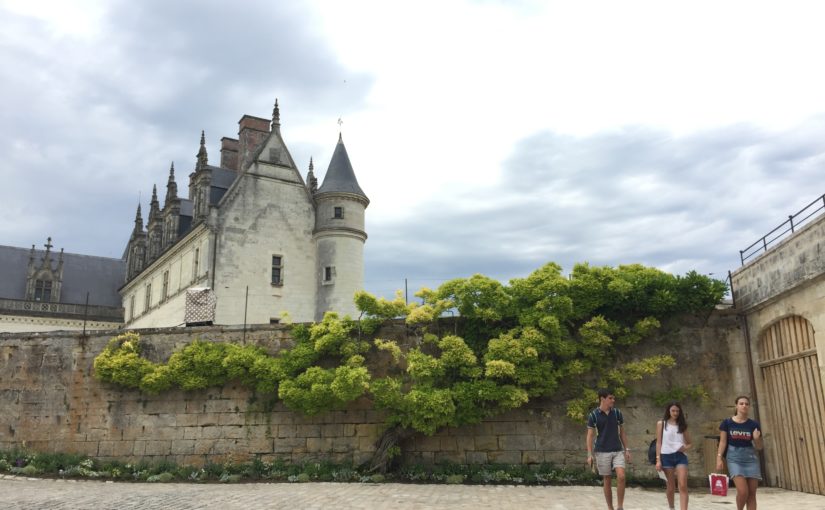I hardly noticed my French improving this week. My weak point has been slowness of speech, which I couldn’t abide in the rush of my last days in Tours.
I either spoke quickly or in English. This became most pronounced Friday evening, when I wound up chatting with a French soldier in Place Plume–the common nickname for Place Plumereau in downtown Tours. I spoke mostly French to him and he spoke mostly English to me, but we didn’t slow down to think of words we didn’t know. I recognize that I have plenty to learn, but this encounter gave me confidence in my ability to communicate resourcefully. We were able to discuss his views on the French army, students abroad, and globalization without much complication. Most of it can be summarized with his declaration that students are “the ones doing the real good.”
That conversation, held just before I said all my goodbyes and walked wistfully home, capped off a weeklong embrace of the Loire Valley’s simple beauty.
Tuesday night, out at the Guingette, I decided to test in conversation two words I learned a few weeks ago–mec, and the verb kiffer. I had already asked the opinions of my host family, who said both are fairly innocuous. Kiffer could be translated as “to dig” in the beatnik sense, so I said je le kiffe in reference to rock music, and the guy I spoke with hardly noticed. I did not have the same luck with mec, which means something like “man” or “dude.”
Like “man,” one’s intonation decides whether the word is familiar or aggressive. The same guy had changed the topic to a recent breakup, something he only trusted me with because of the wine he’d been nursing. I’m used to hearing mec in French rap songs, so I said it with accidental force when I told him ah mec, c’est fou. If I understood correctly, he thought I found him stupid for something he told his ex, and he walked away.
Wednesday, I went on the Institute excursion to Amboise, a beautiful town with a château set prominently above everything. I could imagine riding a horse up the cobblestone ramps leading to the elevated château grounds. Before visiting the château however, we stopped at the château du Clos Lucé–the home of Leonardo da Vinci. Seeing his personal chapel, his workshop, his inventions exhibited throughout his basement and his gardens, made the visit to his grave at the château of Amboise especially impactful.
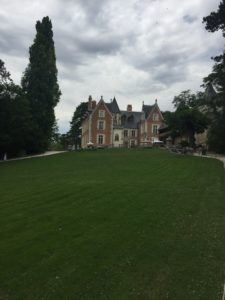
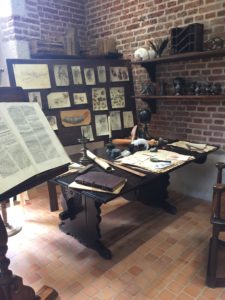
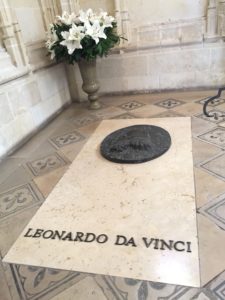
That night, a friend and I sat outside La Cathédrale Saint-Gatien de Tours to watch a light show put on almost every night between July and September. It loosely depicts the history of Tours, ranging back to western Europe during Ancient Grecian times. It’s an awesome spectacle to see the ancient cathedral colored in imaginative scenes.
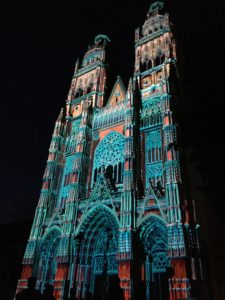
Thursday, I joined a group of small students in making some Galettes des Rois–the traditional cake served at epiphany. I much prefer the flaky simplicity we made to the colorful, sugar-drenched cakes sold at grocery stores.
Friday, I took a tour of L’Abbaye de Marmoutier, one of a limited number of tours offered each year. The site is under excavation and a private school operates among the few of its buildings left standing. We saw archaeologists working in the heat while our guide took us to visit a room designated to St. Martin of Tours. In his later years, he lived as a hermit in this abbey, and prayed in this room. She then walked us along the excavation site to point out the several different styles of architecture used to construct the abbey’s chapels, still discernible in the underground foundations where great halls once stood.
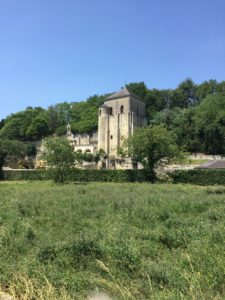
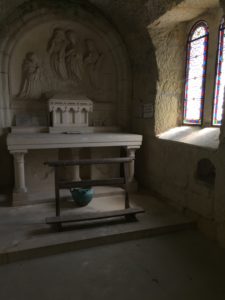
By chance, I saw one more iconic sight before leaving Tours. Walking with the friendly German student I’ve mentioned before through parts of Tours I hardly frequented, I saw a goat. She told me this was the goat of Tours, walked through town almost nightly by its elderly owner. I hadn’t heard of it until just then, but it seemed believable to me. Through all the late-night revelers, along an alleyway, the goat and its owner disappeared.
Later, after my conversation with the French soldier, a friend and I walked another student home. This student recognized a form clopping ahead of us–the goat!–and then I knew the story must be true. That’s the closest I received to closure. I already want to be back in France.
